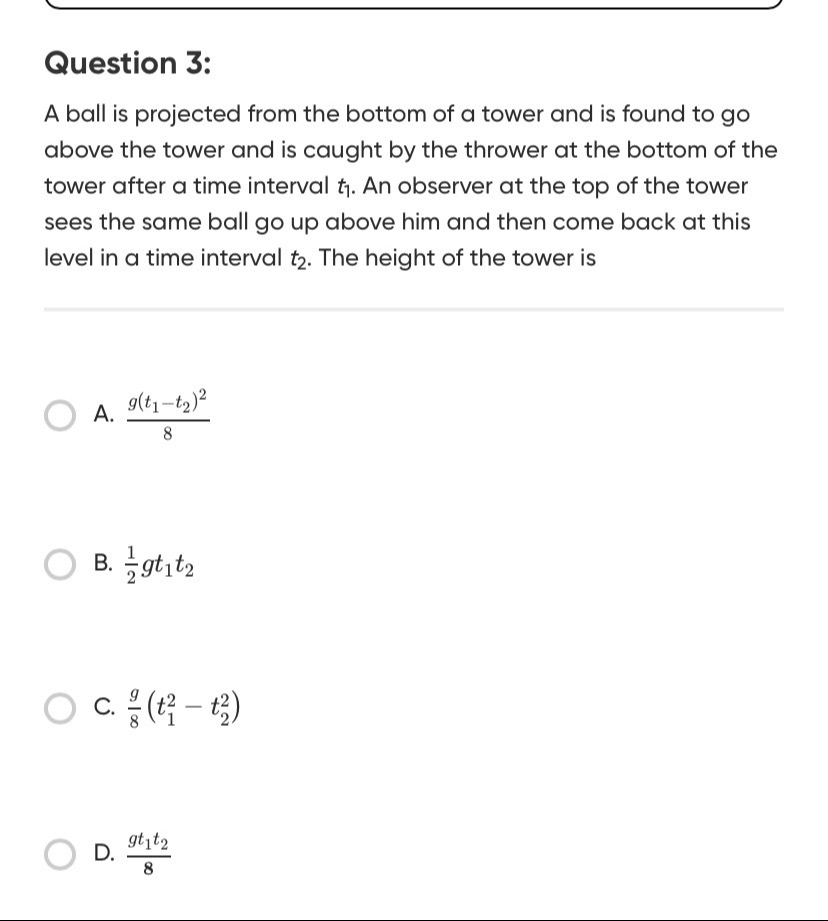Question
Question: A ball is projected from the bottom of a tower and is found to go above the tower and is caught by t...
A ball is projected from the bottom of a tower and is found to go above the tower and is caught by the thrower at the bottom of the tower after a time interval t1. An observer at the top of the tower sees the same ball go up above him and then come back at this level in a time interval t2. The height of the tower is

8g(t1−t2)2
21gt1t2
8g(t12−t22)
8gt1t2
8g(t12−t22)
Solution
Let uy be the initial vertical velocity. The total time of flight t1 for the ball to return to the ground is given by t1=g2uy, so uy=2gt1.
Let h be the height of the tower. The time interval t2 is the time taken for the ball to go up from height h and come back to height h. This is a projectile motion segment where the initial and final heights are the same. If vup is the velocity at height h going upwards, then t2=g2vup, so vup=2gt2.
The time taken to reach height h from the ground is tup. Using the kinematic equation v=u−gt, we have vup=uy−gtup. Substituting the expressions for vup and uy: 2gt2=2gt1−gtup Dividing by g: 2t2=2t1−tup tup=2t1−t2
Now, we can find the height h using the equation h=uytup−21gtup2: h=(2gt1)(2t1−t2)−21g(2t1−t2)2 h=4gt1(t1−t2)−8g(t1−t2)2 To combine these terms, we find a common denominator: h=82gt1(t1−t2)−g(t1−t2)2 Factor out g(t1−t2): h=8g(t1−t2)[2t1−(t1−t2)] h=8g(t1−t2)(t1+t2) Using the difference of squares formula (a−b)(a+b)=a2−b2: h=8g(t12−t22)
